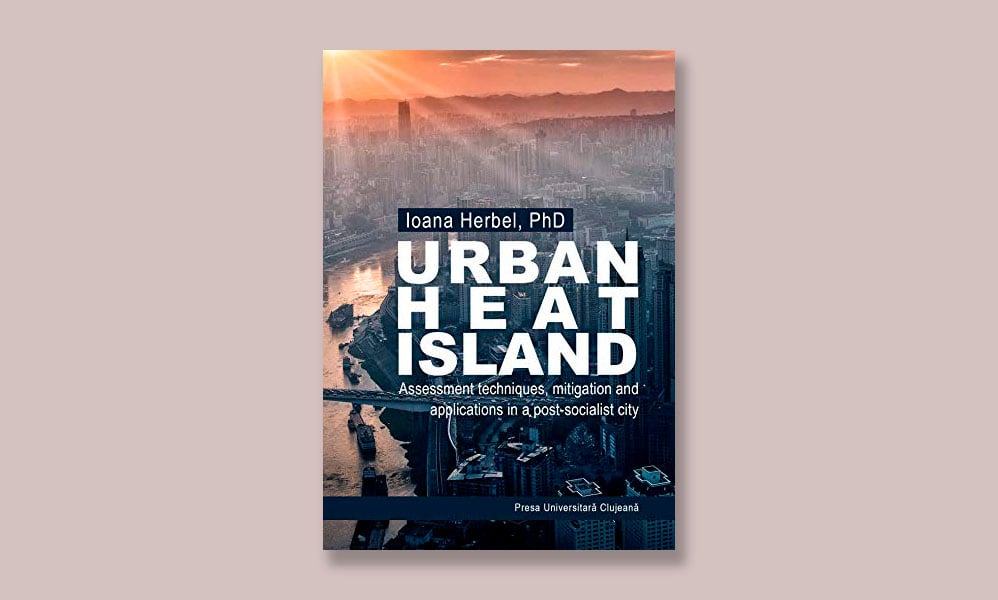Login
Registered users

We present innovative ideas that tackle urban heat island effects.
The article entitled “Topological Transmutation of the Urban Heat Island: Experimenting Ecological Urbanistic Intervention of Public Space in Toledo,” looks at the “exodus of urban dwellers to suburbs and the countryside” due to the pandemic. The author Yong Huang selected Toledo, a legacy city in the Midwest “as the model for this design-based research due to its intensifying social inequality and urban decay and climbing [Urban Heat Island] UHI effects.”
Finally, we share information regarding a recent book on the topic of UHI.
>> We encourage you to browse The Plan Journal and explore for yourself
In “Topological Transmutation of the Urban Heat Island: Experimenting Ecological Urbanistic Intervention of Public Space in Toledo,” the author Yong Huang points out that: “Traceable back to the Mesopotamian civilization, the heat impact of buildings and the urban environment has always been embedded in the human condition.”
 Extending building topographies inside-out, combined as a shared community. Images are courtesy © of the following students, working as a team under the Author’s direction: Research Assistant: Jack Riley Collins; and Image Assistants: Megan Daly, Josh Davids, Cody Ellerbrock, Christopher Fletcher, John Kent, Laura Miles.
Extending building topographies inside-out, combined as a shared community. Images are courtesy © of the following students, working as a team under the Author’s direction: Research Assistant: Jack Riley Collins; and Image Assistants: Megan Daly, Josh Davids, Cody Ellerbrock, Christopher Fletcher, John Kent, Laura Miles.
The article shares:
“Urban topology is a living process that constantly negotiates and reconstructs the relationships between existing and evolving buildings, as well as between buildings and their integral urban environments. To address the UHI issues, sustainable design strategies should be integrated into the processes of topological transformations and transmutations of urban spaces.”
Huang concludes:
“Topological intervention weaves philosophical reflections, poetic and spatial experiences, and performances of the sustainable environment into one continuous yet differentiated vision of urban reality.”
>> The abstract is available in THE PLAN Journal vol. 7/2022, no. 1 (in English)
The book Urban Heat Island: Assessment Techniques, Mitigation and Applications in a Post-socialist City (2021) by author Ioana Herbel investigates the “urban heat island (UHI) as an example of climate change of anthropic origin, and to its atmospheric, biologic and economic impact.”

216 pages
English
July 21, 2021
7 x 0.51 x 10 in.
ISBN-10: 6063708103
ISBN-13: 987-6063708107
To learn more, check out: Assessment Techniques, Mitigation and Applications in a Post-socialist City
Why support + read TPJ?
The Plan Journal is intended to disseminate and promote innovative, thought-provoking, and relevant research, studies, and criticism related to architecture and urbanism. The journal grew out of an awareness that academia is all too often engaged in research that’s disconnected from the real-world challenges that face different professions, and that research is only possible for a small number of professional organizations, and, even then, with limited platforms for its dissemination. The overarching aim of TPJ is therefore to enrich the dialogue between researchers and professionals so as to foster both pertinent new knowledge and intellectually driven modes of practice.
How does it work + why does it matter?
Prospective contributors are encouraged to submit proposals or complete manuscripts to the Editor-in-Chief. Subject to positive feedback, proposals can then be developed into complete manuscripts and submitted for review, using the dedicated portal on the TPJ website.
After preliminary approval, manuscripts will be forwarded to suitably qualified people for commenting. TPJ is committed to following a rigorous double-blind peer review process using at least two reviewers. The Editor-in-Chief may also occasionally invite recognized academics, critics, or professionals (including members of the editorial board) to contribute to the journal without going through the peer review process, if warranted by the author’s reputation.


